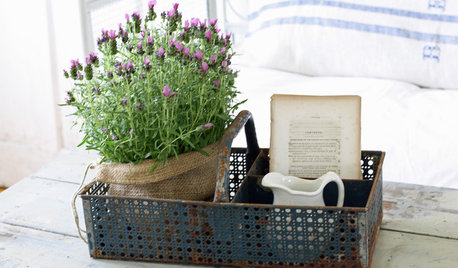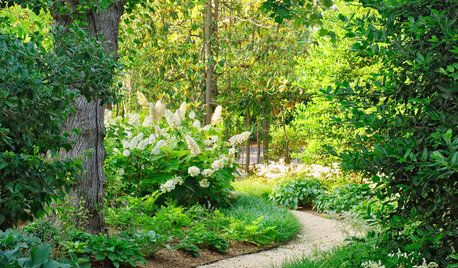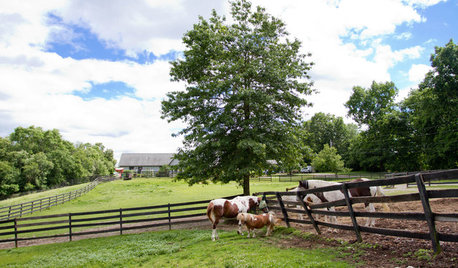Jack-in-the pulpit propagation
arcy_gw
18 years ago
Related Stories

HOUSEPLANTSOutsmart Winter — Make Houseplants of Your Garden Growers
No need to watch Jack Frost play Wreck the Rosemary. Bring your garden inside for the winter, using containers and these guidelines
Full Story
GARDENING GUIDESWe Bust 4 More Native Plant Myths
Have you been taken in by these fallacies about gardening with native plants?
Full Story
GARDENING GUIDESGarden-Friendly Native Alternatives to Overplanted Exotics
There are lots of gorgeous, wildlife-friendly native plants ready to make an appearance in your garden
Full Story
LANDSCAPE DESIGNDitch the Ordinary Ditch: Create a Realistic Dry Creek Bed
Here’s how to turn your water runoff system into an eye-catching accent for your landscape
Full Story
GARDENING GUIDESUnleash Your Guerilla Gardener
Toss some seed bombs around the yard for easy, beneficial plantings
Full Story
LANDSCAPE DESIGNUnwind in Your Own Private Garden Escape
When the world is getting on your last nerve, an outdoor refuge can soothe and nurture. Here's how to design a garden with relaxing in mind
Full Story
GARDENING FOR BUTTERFLIESGarden for Wildlife to Reap Rich Rewards
When you plant with animals and insects in mind, you make gardening easier, the planet healthier and yourself more present
Full Story
GARDENING GUIDESLet's Weed Out 4 Native Plant Myths
Plant wisely for a garden that supports pollinators and requires less work
Full Story
HOUZZ TOURSHouzz Call: Show Us Your Farmhouse!
Bring on the chickens and vegetable patches. If your home speaks country, it might appear in a featured ideabook
Full Story
REMODELING GUIDESYou Won't Believe What These Homeowners Found in Their Walls
From the banal to the downright bizarre, these uncovered artifacts may get you wondering what may be hidden in your own home
Full StoryMore Discussions







Judy_B_ON
kwoods
Related Professionals
West Milford Landscape Architects & Landscape Designers · Glassmanor Landscape Architects & Landscape Designers · Woodinville Landscape Architects & Landscape Designers · Cliffside Park Landscape Contractors · Dunwoody Landscape Contractors · Fuquay-Varina Landscape Contractors · McLean Landscape Contractors · San Carlos Park Landscape Contractors · Santa Maria Landscape Contractors · West Palm Beach Landscape Contractors · Rome Fence Contractors · Sandy Springs Fence Contractors · Saint Petersburg Siding & Exteriors · St. Louis Siding & Exteriors · Wilmington Siding & Exteriorsarcy_gwOriginal Author
plantfreak
Dieter2NC
kwoods
waplummer
Chicory31
BillTakoma
knottyceltic
noramcd
gw:smokey-seven
alan-grower
angusisgone_gmail_com
lycopus
Chymera
fatamorgana2121
seacook_live_com
fatamorgana2121
arcy_gwOriginal Author
seacook
illinoisdoglover
illinoisdoglover
VictoryVisualArt
Lynda Waldrep
Lynda Waldrep
temporal-joe
gramared_910
Lynda Waldrep